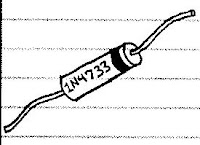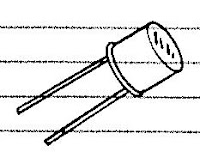LEDs can be powered by continuous current or by brief pulses of current. When operated continously, the current can be varied to change the light output.
LED Drive Circuit
Because LEDs are current dependently, it's usually necessary to protect them from excessive current with a series resistor. Some LEDs include a built-in series resistor. Most do not. It's important to know how to determine the required series resistance (Rs). The formula is:
Example:
Suppose you want to operate ared LED at a forward current (I LED) of 10-milliamperes from a 5-volt supply (V). VLED is 1.7-volts (from data sheet). Therefore Rs is (5-1.7)/0.01 or 330-ohms.
LED Polarity Indicator
Two reverse-parallel LEDs form a polarity indicator. Both LEDs glow if the tested voltage is AC. The series resistor must be used!
Pulsed LED
When operated continuously, an infrared LED might have a maximum current of 100-milliamperes. When driven by brief pulses of current, the same LED may safely accept huge 10-ampere pulses!
LED Polarity Indicator
Two reverse-parallel LEDs form a polarity indicator. Both LEDs glow if the tested voltage is AC. The series resistor must be used!
Pulsed LED
When operated continuously, an infrared LED might have a maximum current of 100-milliamperes. When driven by brief pulses of current, the same LED may safely accept huge 10-ampere pulses!
Note:
A series resistor may not be required if the pulses do not exceed the maximum levels specified for the LED.





















































